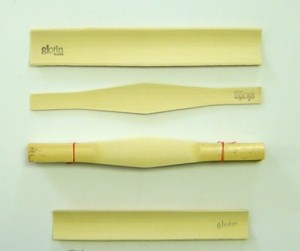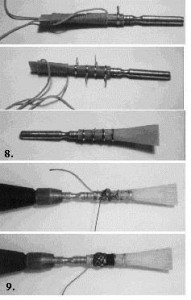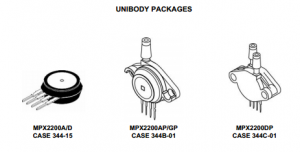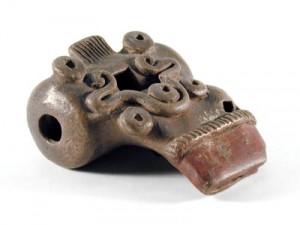Making oboe reeds
When I was younger I played the oboe (I still can by the way) and an important part of the oboe is the reed. A good reed can be the difference between a nice sound coming out of your oboe or a bad one. It can also make a difference in what way you need to play the oboe. A thick reed requires more blowing strength from the player then a thinner reed. However, the thickness of the reed has an influence on the sound but also the lifespan of the reed. One can say that a reed is therefore a very personal part of the musical instrument and that is also why many oboe players make their own reed. Truth be told, I haven’t done this in a very very long time but that is also the reason why I want to focus on this for my design challenge, to hopefully regain some of the knowledge I lost. I will analyze this practice using the Keller & Keller text. Keller and Keller quote Wertsch saying the following:
Our research focuses primarily on the interrelations of knowledge and action as individual phenomena, although the inclusion of individual action within a larger activity system requires that we can draw on both social and routine elements. From this perspective neither the human organism nor the external world is solely responsible for developing knowledge about the world (Wertsch, 1981, p. 38).
In a different publication by Janice E. Fournier called How a Creative “System” Learns: The Distributed Activity of Choreography, the author goes into Keller and Keller also implicitly referring to the quote above. Fournier states that most studies investigate how individuals or groups of individuals coordinate their activities in accomplishing routine tasks or solving well-defined problems. Keller and Keller however, as can be read in the quote, see practitioners engage in iterative processes of visualizing goals, planning a means for creating those goals in form and acting on the plan with a mind open to alterations and new ideas as the form evolves. In this creative system, activity is distributed across the practitioner and specific tools and structures in his environment (Fournier, 2012).
Thus, to discuss how a reed is being made, how I have made reeds is to discuss and analyze the creative system. So we need to know how activity is distributed across the practitioner and specific tools and structures in my environment. Knowledge is simultaneously a prerequisite and a consequence of action and action is like a prerequisite and a consequence of knowledge (Keller & Keller, 1994). One leading statement for me to get a grip of this analysis will be from Leont’ev stating that the internal mental order is continually transformed by external actions and their material constituents and results.
Prior Knowledge
To make an oboe reed prior knowledge is necessary. The first time I made a reed was during a workshop. The workshop lasted several weeks and was being taught by an oboe teacher and reed maker. The prior knowledge you need is not only about reed making but also about oboe. For one, this is because the reed has a specific function, it is necessary to play the oboe. Two, the reed needs to be personalized. Person A prefers a different reed than person B and thus you need knowledge about the instrument but also about the client. Usually you are your own client. Reeds are not made on a large scale and usually not for others. When you are a beginner at oboe playing you can buy reeds from your teacher. He or she has made the reeds, and luckily also knows you a bit so the reed is somewhat personalized to your needs.
During the workshop however I was confronted with a set of tools and materials I did not know well. Scrapers, specific kinds of wood, lines etc. I had years of playing the oboe though and also of using reeds so I had a mental image of what a reed was supposed to be like. Not only how it was supposed to look like, but also function and feel like. However, now I had to bend the wood, and make the cork. How far can I bend it? When does it break? These are especially points where material constituents and external actions (such as by my oboe teacher) interrelate with my internal mental order. A workshop is of course the perfect place for this. In a way a workshop is the place to question the internal and external, it is a place to experiment and learn.
A big part of making a reed is scraping. You need to scrape the cork but also the reed itself. Scrape too much and the cork might not fit and/or the reed becomes too weak. But scrape too little and it becomes too hard to play (and the cork still does not fit!). So here we have a constant evaluation in progress. A reciprocal process between crystallization and finalizing. My teacher would of course advice on what to do, but the teacher can only do so much. It almost becomes like an actor network, where all these actors play a role; the material, the teacher, the tool, you yourself. Human and non-human actors all playing their part in the ongoing process. Already we see a creative system where activity is distributed across the practitioner and specific tools (like the scraper, the wood etc.) and structures in his environment (such as the teacher).








